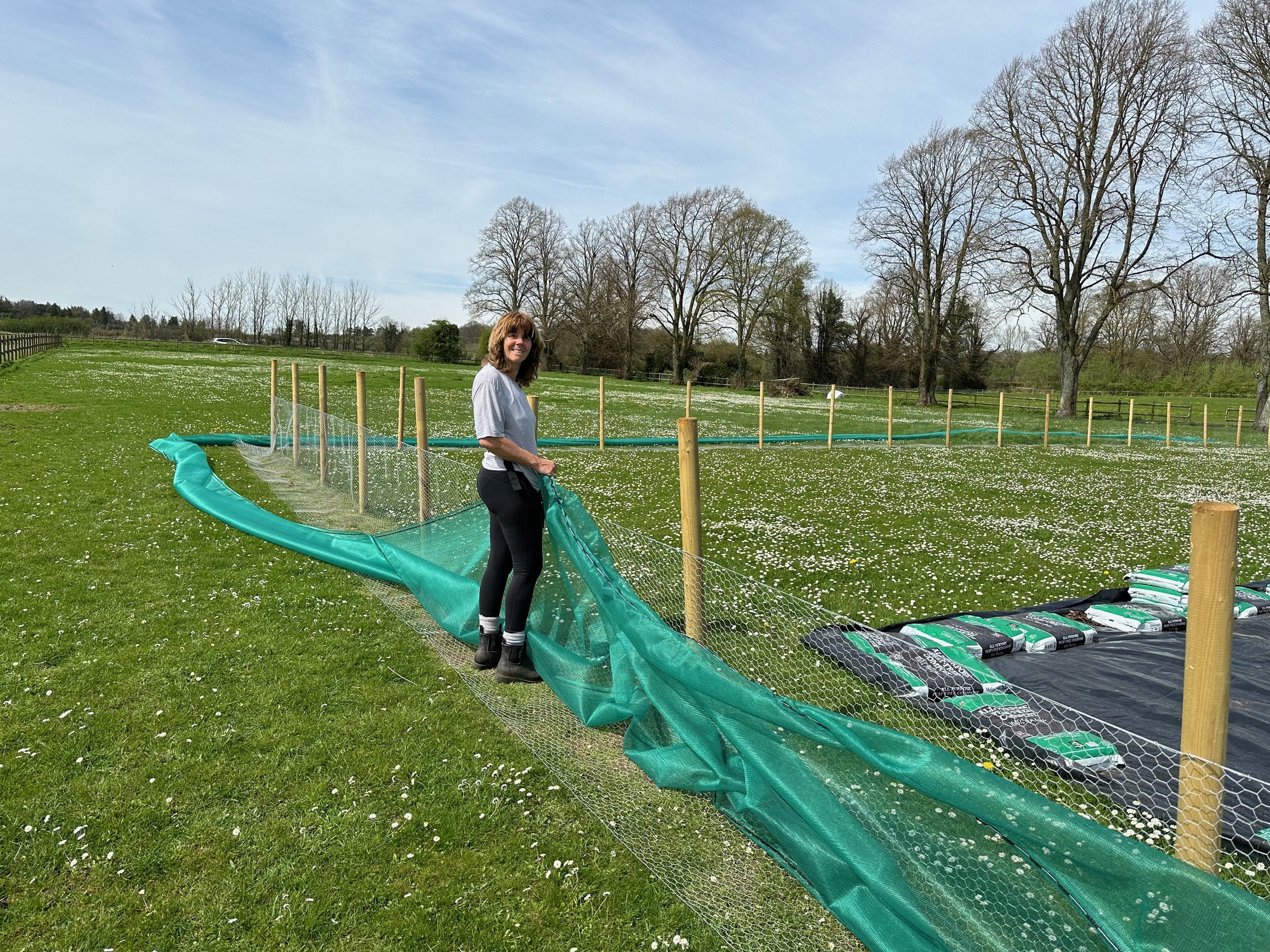Wind breaks and rabbit fencing
A couple of issues that we never envisaged when we started the flower farm are high winds and rabbits. Annoyingly, the solutions require a lot of investment in both time and money.
Our flower farm is in a field next to our house. It’s not particularly high or exposed, but the UK just seems to keep getting windier, and gusts of 50mph are pretty common. To protect the flowers, we’ve had to learn about and install some windbreaks.
The ideal windbreak
Windbreaks should ideally face the prevailing wind and be longer than, or extend down the sides of, the area needing protection.
They’ll protect an area on the leeward side about 10 times their height. So, a 1.5 metre windbreak will protect around 15 metres the other side. If the area is bigger than this, you’ll need to put in multiple windbreaks. But we don’t want one that’s really tall or it might shade out the flowers.
Shrubs and hedging make a great windbreak, but you need something to protect them from the wind while they’re growing. So we’ve had to put up two 50 metre sections of plastic windbreak netting or mesh. It’s about a £1 a metre, you can get it in different heights and thicknesses, and it will cut the wind by 30-50%.
We bought around 60 round wooden fence stakes. At 1.8 metres, they allow mesh of 1.5m and 30 cm to bang into the ground. Roger does this manually with a post rammer. It looks, and probably is, exhausting. The posts are about £5-6 each and you need them at least every 1.5 metres.
You thread galvanised wire through the top and bottom of the mesh to keep it taught. I’m sure there must be a better technique for this, but we just laboriously threaded the wire through. Then you strain and staple it to the posts.
The rabbits
Then there are the rabbits who think we’ve planted flowers especially for them. And they haven’t read the RHS guide to rabbit resistant plants either. Some things they’re not supposed to like, they devour, and pretty much anything with young shoots.
It is soul destroying to find young plants that you have sown from seed and lovingly tendered for months before planting them out, get eaten overnight.
Our fixes started low key with a couple of sonic animal repellers. These shine a beam and sound an ultrasonic alarm when they detect movement. We also tied shiny deer tape tied to posts. But the rabbits just got used to them.
Next, we tried putting a fleece low tunnel over the beds. This actually workespretty well, and has the added advantage of providing a bit more warmth and protection to the plants. But making one for every bed would get very expensive and mean a lot of faff.
So we’re having to rabbit fence. This involves putting some galvanised hexagonal wire mesh under ground or along the surface towards the threat, folding it to a height of around 60cm, then securing it with straining wires top and bottom. If you lay it on the ground, you also have to bang in metal staples about every 20cm to hold it down.
Of course, to be effective, you have to fence your entire plot, and install gates wherever you need to get people or equipment through.
We’ve only done about a third so far, and really need to get on and finish it before we can sow too much into the beds. Fingers crossed it will work - and that they don’t tell the deer about us!
Bulb to Bunch | Beautiful, locally grown flowers, reminiscent of an English country garden, available as bouquets, in buckets and wholesale.
www.bulbtobunch.com



